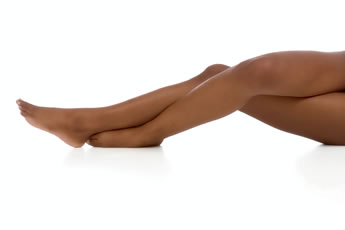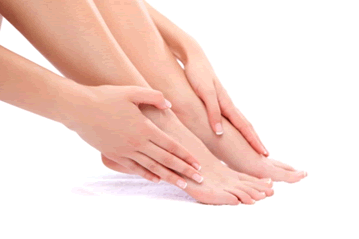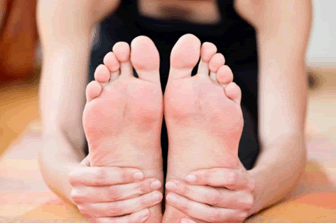Blog
Corns and Callouses
 Corns and calluses often occur as the skin attempts to protect itself from excessive pressure or friction on the skin. Corns are typically smaller and include an inflamed portion of skin, making them considerably more painful. While corns can be treated at home most of the time, it is always best to seek professional attention, especially if diabetic. Wearing proper fitting shoes and socks can help reduce and prevent corns.
Corns and calluses often occur as the skin attempts to protect itself from excessive pressure or friction on the skin. Corns are typically smaller and include an inflamed portion of skin, making them considerably more painful. While corns can be treated at home most of the time, it is always best to seek professional attention, especially if diabetic. Wearing proper fitting shoes and socks can help reduce and prevent corns.
Corns can be a nuisance for your foot health. For more information about treatment, consult with Dr. Michael E. Newman of Pennsylvania. Our doctor will attend to all of your podiatric needs.
Corns: What are they? And how do you get rid of them?
Corns can be described as areas of the skin that have thickened to the point of becoming painful or irritating. They are often layers and layers of the skin that have become dry and rough, and are normally smaller than calluses.
Ways to Prevent Corns
There are many ways to get rid of painful corns such as wearing:
- Well-fitting socks
- Comfortable shoes that are not tight around your foot
- Shoes that offer support
Treating Corns
Treatment of corns involves removing the dead skin that has built up in the specific area of the foot. Salicylic acid can help in getting rid of these corns because it dissolves keratin, which is the protein that makes up a good majority of corns. Podiatrists recommend that people with diabetes not use salicylic acid but should consult with their podiatrist regarding the treatment of corns.
If you have any questions please feel free to contact our offices located in Plymouth Meeting and Ambler, PA. We offer the newest diagnostic tools and technology to treat your foot and ankle needs.
Cold Plasma Developed by University Can Freeze Toenail Fungus
 A new form of cold air plasma developed by researchers at the University of California, Berkeley, can now reportedly freeze out toenail fungus. Cold plasmas can kill bacteria, remove dental plaque, loosen the connections between tissue cells, help coagulate blood and reduce bleeding. Using e. coli, researchers discovered a significant reduction in e. coli populations following the application of cold plasma; Device Farm also reported success in killing the specific fungi responsible for fungal infections. FDA approval is still required before the company can test on human patients.
A new form of cold air plasma developed by researchers at the University of California, Berkeley, can now reportedly freeze out toenail fungus. Cold plasmas can kill bacteria, remove dental plaque, loosen the connections between tissue cells, help coagulate blood and reduce bleeding. Using e. coli, researchers discovered a significant reduction in e. coli populations following the application of cold plasma; Device Farm also reported success in killing the specific fungi responsible for fungal infections. FDA approval is still required before the company can test on human patients.
While toenail fungus is troublesome to eradicate, it is not impossible. For more information about treatment, consult with Dr. Michael E. Newman of Pennsylvania. Our doctor will attend to all of your podiatric needs.
Toenail Fungus Treatment
Toenail fungus is a problem which affects many people and is hard to get rid of. Fortunately, there are several methods to go about treating toenail fungus.
Antibiotics & Treatments
Lamisil – is the most commonly effective treatment for toenail fungus. It is available as an antibiotic Terbinafine tablet and cream. Terbinafine is a chemical component which kills fungal growth on the body. Applying regular doses will gradually kill the fungal growth. It is important to keep the area clean and air free.
Talcum powder – applying powder on the feet and shoes helps keep the feet free of moisture and sweat.
Sandals or open toed shoes – wearing these will allow air movement and help keep feet dry. They also expose your feet to light, which fungus cannot tolerate. Socks with moisture wicking material also help as well
Alternative Treatments
There are always surgical procedures that are available for toenail fungus. Some people would like immediate quick removal of toenail fungus. Surgeons will be able to cut through and remove the growth using laser surgery. It is important not to try and remove it yourself. Once removed, your old shoes will need to be replaced to avoid reinfection.
If you have any questions please feel free to contact our offices located in Plymouth Meeting and Ambler, PA. We offer the newest diagnostic tools and technology to treat your foot and ankle needs.
Common Foot Changes to Women During Pregnancy
 Foot changes during pregnancy are very common, but some women do not understand why such changes occur. Size increase, arch flattening, and instability in the feet or ankles are all a result of weight gain and hormonal shifts. Normal pregnancy weight gain can change the way a woman walks, leading to instability, and fluid build-up in the lower extremities can cause the feet to grow in size. To manage these changes, compression stockings, regular walking and low-impact exercises can be used effectively.
Foot changes during pregnancy are very common, but some women do not understand why such changes occur. Size increase, arch flattening, and instability in the feet or ankles are all a result of weight gain and hormonal shifts. Normal pregnancy weight gain can change the way a woman walks, leading to instability, and fluid build-up in the lower extremities can cause the feet to grow in size. To manage these changes, compression stockings, regular walking and low-impact exercises can be used effectively.
Pregnant women are susceptible to aching and swollen feet and should be treated with care. For more information about other cures for swollen feet during pregnancy, speak to Dr. Michael E. Newman of Pennsylvania. Our doctorwill assist you with all of your foot and ankle concerns and answer any of your related questions.
What foot problems can arise during pregnancy?
One problem that can occur is over-pronation, which occurs when the arch of the foot flattens and tends to roll inward. This can cause pain and discomfort in your heels while you’re walking or even just standing up, trying to support your baby.
Another problem is edema, or swelling in the extremities. This often affects the feet during pregnancy, but tends to occur in the later stages.
How can I keep my feet healthy during pregnancy?
- Wearing orthotics can provide extra support for the feet and help distribute weight evenly
- Minimize the amount of time spent walking barefoot
- Wear shoes with good arch support
- Wear shoes that allow for good circulation to the feet
- Elevate feet if you experience swelling
- Massage your feet
- Get regular, light exercise, such as walking, to promote blood circulation to the feet
If you have any questions please contact our offices located in Plymouth Meeting and Ambler, PA. We offer the newest diagnostic and treatment technologies for all your foot and ankle needs.
Risk Factors that Increase Likelihood of Plantar Fasciitis
 While plantar fasciitis is a common condition that does not discriminate, there are certain factors that can make some people more susceptible. Those over 40 years old, are often on your feet at work, have gained weight or have lost calf muscle flexibility, may find that they are more likely to have symptoms of the condition. Although symptoms include pain when you first wake up, stand for a long time, or walk without foot supports, there are treatments available. By ensuring you have the proper foot support and regularly ice your feet, you can help reduce and prevent further inflammation.
While plantar fasciitis is a common condition that does not discriminate, there are certain factors that can make some people more susceptible. Those over 40 years old, are often on your feet at work, have gained weight or have lost calf muscle flexibility, may find that they are more likely to have symptoms of the condition. Although symptoms include pain when you first wake up, stand for a long time, or walk without foot supports, there are treatments available. By ensuring you have the proper foot support and regularly ice your feet, you can help reduce and prevent further inflammation.
Plantar fasciitis can be very painful and inconvenient. If you are experiencing heel pain or symptoms of plantar fasciitis, visit Dr. Michael E. Newman of Pennsylvania. Our doctor can treat your heel pain as well as any other foot or ankle condition.
What is Plantar Fasciitis?
Plantar fasciitis is the inflammation of a the thick band of tissue that runs along the bottom of your foot, known as the plantar fascia, and causes mild to severe heel pain.
What Causes Plantar Fasciitis?
· Excessive running
· Non-supportive shoes
· Overpronation
· Repeated stretching and tearing of the plantar fascia
How Can It Be Treated?
· Conservative measures – anti-inflammatories, ice packs, stretching exercises, physical therapy, orthotic devices
· Shockwave therapy – sound waves are sent to the affected area to facilitate healing and are usually used for chronic cases of plantar fasciitis
· Surgery – usually only used as a last resort when all else fails. The plantar fascia can be surgically detached from the heel
While very treatable, plantar fasciitis is definitely not something that should be ignored. Especially in severe cases, speaking to your doctor right away is highly recommended to avoid complications and severe heel pain. Your podiatrist can work with you to provide the appropriate treatment options tailored to your condition.
If you have any questions please contact our offices located in Plymouth Meeting and Ambler, PA. We offer the newest diagnostic and treatment technologies for all your foot and ankle needs.
